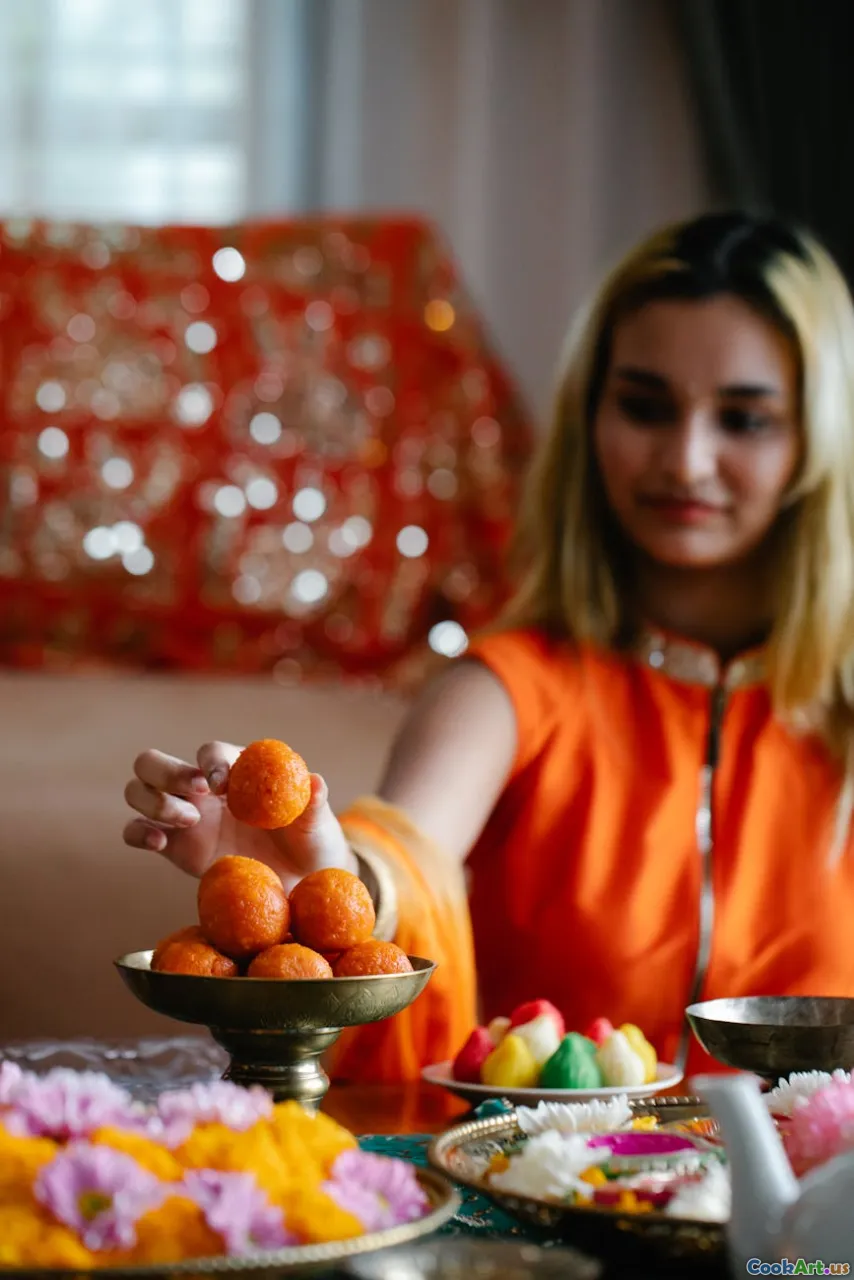MustTaste Sweetmeats in Mauritius Creole Kitchens
8 min read Discover the rich tapestry of Mauritian Creole sweetmeats, their cultural significance, vibrant flavors, and the stories behind these beloved traditional treats. June 11, 2025 06:01
MustTaste Sweetmeats in Mauritius Creole Kitchens
Imagine walking through the bustling streets of Port Louis or wandering into a humble village kitchen where the air is thick with the aroma of caramelized sugar, fragrant spices, and freshly grated coconut. Here, in the heart of Mauritius, the art of making sweetmeats isn’t just about indulgence; it’s a vibrant thread woven into the island's cultural fabric. These confections tell stories of history, migration, and community, offering a taste of the island’s soul.
An Introduction to Mauritius’s Sweetmeat Heritage
Mauritius, a melting pot of cultures—African, Indian, Chinese, and European—has cultivated a unique culinary tradition that reflects its diverse history. Among its most cherished culinary treasures are the sweetmeats, or 'gâteaux' as locals affectionately call them. These sweets are not merely desserts; they are symbols of celebration, remembrance, and social bonding.
From the bustling markets to family gatherings, Mauritian sweetmeats evoke nostalgic memories and create new ones. Their vibrant colors, fragrant aromas, and complex textures make them irresistible. In this article, we will journey through the most iconic Mauritian creole sweetmeats, exploring their origins, ingredients, preparation techniques, and cultural significance.
The Cultural Significance of Mauritian Sweetmeats
A Symbol of Festivity and Tradition
In Mauritian society, sweetmeats are inseparable from celebrations—be it Diwali, Christmas, Eid, or local festivals like Cavadee. These sweets are often exchanged as gifts, shared among neighbors, or offered to deities in religious rituals. They serve as tangible expressions of gratitude, love, and communal harmony.
Passing Down Through Generations
Many recipes are handed down orally from grandmothers to mothers, preserving culinary heritage amidst modern influences. The preparation of these sweets often involves communal effort, turning cooking into a festival itself. This tradition strengthens familial bonds and sustains cultural identity.
A Reflection of Societal Diversity
The ingredients and techniques used in Mauritian sweetmeats mirror the island’s multicultural roots. Indian spices, Chinese techniques, European confectionery methods—all blend seamlessly to create unique confections that are distinctly Mauritian.
Signature Sweetmeats of Mauritius Creole Kitchens
1. **Gâteaux Piments (Spicy Cakes)**Despite their name, Gâteaux Piments are more than just spicy cakes—they are savory-sweet bites that symbolize resilience and community spirit.Ingredients:
- Split peas or chickpeas
- Green chilies
- Fresh coriander
- Onion
- Spices like turmeric, cumin, and pepper
- Coconut oil for frying
**Preparation:**The peas are soaked, ground into a coarse paste, and mixed with chopped chilies, onions, and spices. Small portions are shaped into flat rounds or balls and deep-fried until golden brown. The result is a crispy exterior with a soft, flavorful interior.**Taste & Texture:**Crispy on the outside, tender inside, with a fiery kick balanced by the freshness of coriander and the sweetness of onions.Cultural Note: Often served as a snack during festivals or family gatherings, these cakes symbolize the Indian influence on Mauritian cuisine.
2. **Samsa (Sweet Pastry Triangles)**A flaky, sweet pastry filled with coconut, jaggery, and spices, Samsa is a staple during festive seasons.Ingredients:
- Wheat flour
- Ghee or butter
- Grated coconut
- Jaggery (unrefined palm sugar)
- Cardamom
- Nutmeg
**Preparation:**The dough is rolled thin, cut into triangles, filled with a mixture of grated coconut and jaggery, then sealed and baked or fried until crisp.**Taste & Texture:**Crunchy, sweet, with aromatic hints of cardamom and nutmeg, offering a delightful contrast between flaky exterior and moist filling.Cultural Note: Favorite during Diwali, these pastries evoke childhood memories and familial warmth.
3. **Jelly Coconut (Gelée Coco)**A refreshing, gelatinous dessert that highlights the tropical flavors of coconut.Ingredients:
- Fresh coconut water
- Gelatin or agar-agar
- Sugar
- Lime juice
**Preparation:**Coconut water is sweetened, flavored with lime, and set with gelatin or agar-agar. It’s chilled until firm, then sliced into cubes.**Taste & Texture:**Delicately sweet, with a cooling coconut flavor and a smooth, jelly-like consistency.Cultural Note: Often enjoyed as a cooling treat during hot Mauritian afternoons, it symbolizes the island’s tropical bounty.
4. **Kouign-Amann (Mauritian Version)**Though originally French, Mauritian Kouign-Amann has a local twist—rich, buttery, and caramelized.Ingredients:
- Flour
- Sugar
- Butter
- Yeast
**Preparation:**Dough is layered with butter and sugar, then folded repeatedly to create flaky layers. Baked until golden and caramelized.**Taste & Texture:**Sweet, buttery, with a crispy crust and soft, layered interior—a harmony of textures.Cultural Note: Enjoyed during tea times, especially in Creole households, as a symbol of colonial culinary influence.
The Art of Making Mauritian Sweetmeats
Techniques & Traditions
Mauritian sweetmeat making involves a blend of techniques—wet grinding, frying, baking, and setting—that require patience and skill. Many recipes demand precise timing and temperature control, passed down through generations.
Ingredients & Sourcing
Local markets are treasure troves of ingredients—fresh coconuts, aromatic spices, jaggery, and dried fruits. The island’s tropical climate ensures that these ingredients are vibrant and flavorful.
Community & Celebrations
Preparation often takes place during communal gatherings, transforming cooking into a shared ritual. Children learn from elders, and stories are exchanged over bubbling pots and fragrant frying pans.
Personal Reflections & Food Memories
Growing up in Mauritius, I recall the aroma of sweetmeats wafting through the house during festive seasons. My grandmother’s hands expertly rolled dough for Samsa or fried Gâteaux Piments, humming traditional songs. These moments are etched into my memory, reminding me that food in Mauritius isn’t just sustenance but a language of love and heritage.
Final Thoughts
Mauritian creole sweetmeats are more than just desserts; they are a celebration of history, culture, and community. Each bite offers a glimpse into the island’s soul—rich, diverse, and fiercely proud of its traditions. Whether you’re a seasoned chef or an eager traveler, tasting these sweetmeats is an immersive journey into Mauritius’s vibrant culinary landscape. Embrace the flavors, savor the stories, and let these confections connect you to the heart of the island.
In Mauritius, every sweet has a story—what will your taste reveal?









